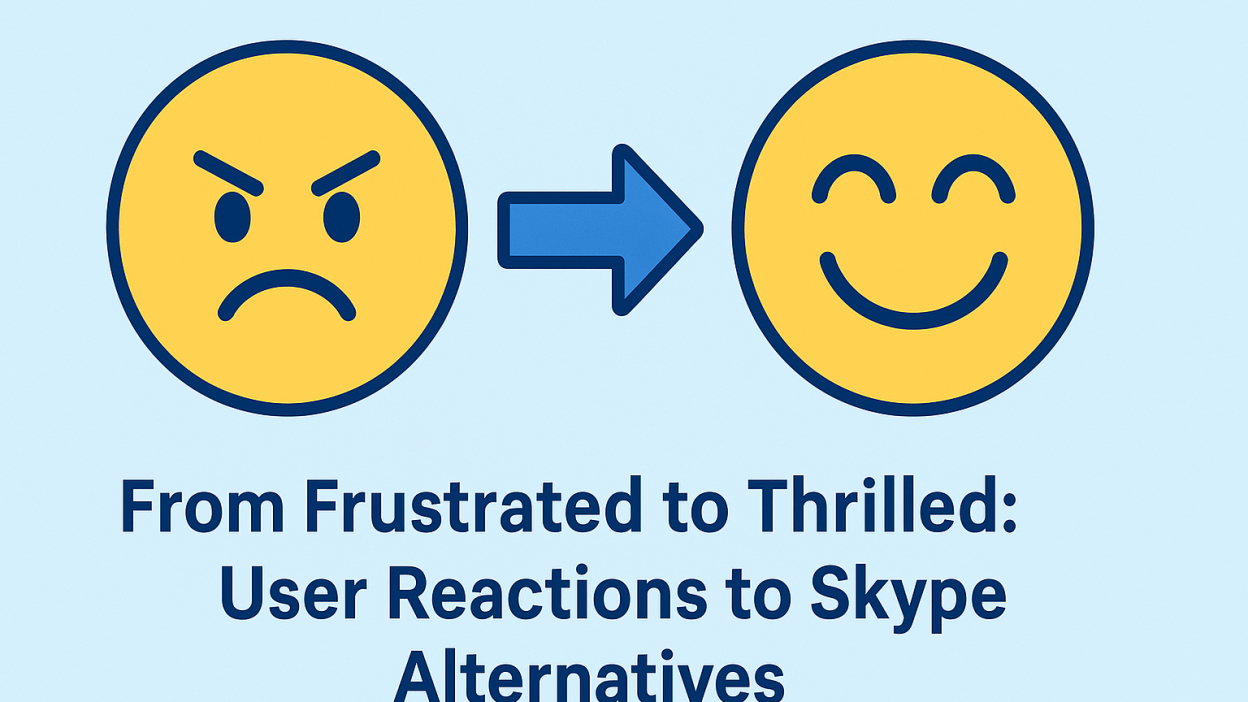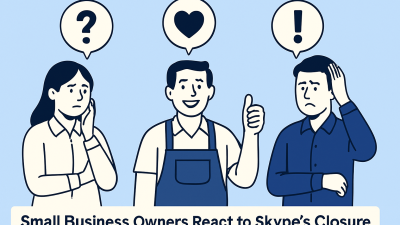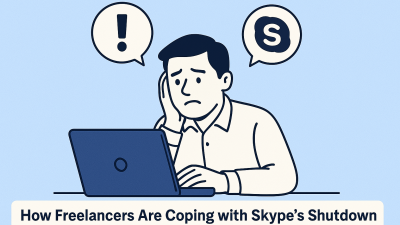Some transitions in tech come with excitement. A new phone, a redesigned app, something better than before. The shutdown of Skype wasn’t one of those moments.
It landed like a message nobody asked for. Suddenly, the tool that had kept families close, freelancers productive, and remote friendships alive was heading for the door. Users weren’t just uninstalling an app. They were being asked to leave a space that felt reliable, personal, and familiar.
For years, Skype served a simple purpose: to let you see and hear the people who mattered. It worked across borders, through weak Wi-Fi, and in awkward time zones. That wasn’t just useful. It was emotionally grounding. Losing it hit harder than expected.
The shift wasn’t about losing a feature. It was about losing rhythm. How you called, how you scheduled, how you kept a connection going without needing to explain the platform every time.
That loss sparked the first reaction across forums and threads: frustration.
Anger First, Then Questions
When Microsoft announced Skype’s retirement, the first reaction from long-time users wasn’t curiosity, it was annoyance.
People weren’t excited to “upgrade” to Teams. They weren’t looking for new bells and whistles. They were asking simple things:
-
“Where do I go now?”
-
“Will I lose my contacts?”
-
“Why didn’t they just fix Skype instead of replacing it?”
For many, it wasn’t just about the features. It was about being pushed into a new system without a clear handoff. Teams looked foreign. Other apps felt unfamiliar. And the timing didn’t feel like a choice.
This wasn’t an eager migration. It was an uninvited move.
Not All Users Had the Same Problem — Or the Same Goals
One thing became clear very quickly: not everyone had the same reason for using Skype.
Some were focused on international calling. Others used it for recurring work meetings, tutoring, or family chats. A few just liked that it didn’t require much effort, it opened fast, worked across platforms, and didn’t feel like a workplace.
So when it came to finding an alternative, users weren’t just looking for a new “video chat app.” They were trying to replace the one thing they depended on most.
And that’s where the shift began. Not from frustration to joy, but from broad disappointment to specific searches. People started experimenting. Not because they wanted to, but because they had to.
Trying New Apps: The Phase Where Everyone Was Guessing

In the weeks after the announcement, users began downloading and testing. Not one app — several. Conversations across Reddit and Twitter showed the same pattern:
A call on Zoom.
A chat in WhatsApp.
A file shared through Google Meet.
Another test on Viber.
It felt scattered. Some people found features they liked, others felt like nothing could replace Skype’s balance of simplicity and function.
But something started to change. The act of trying, even when clunky, was giving people new comparisons. Not just on technical performance, but on how each app made them feel.
Reluctant Discovery: “I Didn’t Expect to Like This”
What surprised many users wasn’t that the alternatives worked — it was that some of them worked better than Skype in areas that mattered.
One person mentioned clearer video quality on Zoom than they’d ever experienced with Skype. Another liked that Signal didn’t tie their identity to a Microsoft account. A few appreciated that WhatsApp allowed seamless calling without needing a desktop client at all.
These weren’t upgrades they’d been looking for. But in trying to replace something lost, they found tools that offered something new. Sometimes, smaller. Sometimes simpler. But often, more aligned with their current habits.
That slow shift — from clinging to what worked before to noticing what now fits better — was where frustration started giving way to something else.
Not excitement. Not yet. But a kind of curiosity that opened the door to possibility.
Some Didn’t Just Adapt — They Got Better at Communicating
This is the part that rarely shows up in feature lists or app reviews. After a few weeks of adjusting, many users weren’t just managing the change; they were communicating better than they had with Skype.
They discovered apps that:
-
Connected faster on mobile
-
Offered better call recording
-
Allowed easier contact discovery
-
Didn’t require logging into Microsoft’s broader ecosystem
For families, it meant more accessible calling. For freelancers, it meant more professional setups. For digital nomads, it meant fewer dropped calls and less bloat.
By focusing less on replacing Skype and more on solving their communication needs, users started building new systems, not out of nostalgia but out of what worked right now.
New Habits Are Built One Call at a Time
No app becomes a favorite overnight. But as Skype’s shutdown date crept closer, something important started happening.
People stopped searching for the next Skype. They started building new patterns around tools that simply fit their lives better.
Instead of waiting for Teams to “feel like Skype,” they set up WhatsApp groups for family, started booking meetings on Zoom without friction, and made international calls from platforms that didn’t require a Microsoft login at all.
The more they used these tools, the more the old resistance began to soften. Not because the new apps were perfect, but because they made calling and chatting easier in ways Skype hadn’t improved in years.
The shift didn’t come with fanfare. It happened in small, quiet moments. A call that didn’t drop. A contact was added without needing an ID. A notification system that didn’t misfire.
What grew from that was more than just acceptance, it was a new rhythm.
Zoom, WhatsApp, Signal, Viber — Not Just Alternatives, But Upgrades
Let’s step out of the theoretical for a moment. What did people actually find in these new tools?
Zoom was a surprise winner for many, especially those with professional or family groups. It handled group calls effortlessly. Screen sharing was smoother. People liked how it separated meetings from chat — a clean break from Skype’s all-in-one interface.
WhatsApp worked for users who needed something casual but stable. Mobile-first design, clear call quality, and no need to sign in on a desktop. It became the go-to for short daily check-ins, especially for cross-generational families.
Signal and Telegram gave users control. Privacy-conscious communities moved here for voice calls and secure messaging. The simplicity appealed to former Skype users who didn’t want all the integrations that came with Teams.
Viber offered strong international support. Some users noted that its call rates, speed, and interface reminded them of early Skype, minus the clutter that Skype eventually built around itself.
The takeaway wasn’t that one app replaced Skype. It was that people found specific tools for specific needs, often better tailored than Skype had been in years.
Unexpected Wins: Features People Didn’t Know They Wanted
What started as a loss turned into a discovery. As users moved through different apps, they started noticing things they’d never expected to care about.
Call scheduling. Message encryption. Fast contact syncing between devices. The ability to record calls or drop in on a group chat without formal invites.
These weren’t high on anyone’s priority list when they first left Skype. But after a few weeks using apps that just worked, the thought of going back, even if Skype were still available, started to feel unnecessary.
People weren’t just replacing a tool. They were raising the bar.
Some Users Found Simplicity in Separation
One of the subtle frustrations with Skype’s later years was how much it tried to be — a little bit of everything. Messaging, calling, screen sharing, emojis, integrations, chatbots, all rolled into one blue window.
In contrast, many of the apps people migrated to offered clarity through constraint.
-
WhatsApp for calls and messages
-
Zoom for meetings
-
Google Meet for quick link-based calls
-
MyTello for international dial-outs
That separation felt cleaner. Lighter. Less noisy.
What felt like a scattered mess at first became a more personalized system, not bound to one brand’s ecosystem, but tailored to each user’s preferences.
For many, this wasn’t just tolerable. It was better.
Why Some People Are Actually Grateful Skype Is Gone

Not everyone would say it aloud. But in comment threads and reviews, the sentiment is clear: some users are relieved.
They didn’t realize how much of their communication was shaped by Skype’s limitations until they left. Now, their calls start faster. Messages land without sync issues. They aren’t toggling between “Skype for Business” and “Personal Skype” anymore. There’s no legacy account confusion. No half-broken integrations.
One user put it simply:
“I didn’t know how many little things I’d been tolerating until I tried something else.”
This isn’t just a reaction. Its performance. Users are doing better — clearer audio, more reliable connections, easier onboarding for friends and clients.
And they didn’t have to wait for Microsoft to fix anything. They just had to move.
There’s Still Room for Nostalgia — But Not for Regression
It’s okay to miss what worked. Skype was a pioneer. It connected the world when few tools could. It built habits that shaped digital relationships for decades.
But nostalgia alone isn’t a strategy. Communication has changed. The needs have changed. People want more control, faster tools, better mobile support, and fewer hoops.
The market has caught up. And for users who are willing to shift their mindset, it’s already delivering more than Skype ever did.
The Final Phase: Clarity
People who once felt overwhelmed now have a clearer understanding of what matters:
-
Do I need lightweight calling?
-
Do I prioritize encryption?
-
Do I need screen sharing for work?
-
Am I calling one person regularly or hosting large group sessions?
These aren’t abstract questions anymore. They’re informed by weeks of experimenting, failing, switching, and succeeding.
The frustration has served its purpose. It pushed users to re-evaluate their habits — not just what app they use, but how and why they communicate in the first place.
For many, that reflection has turned into preference. And that preference has turned into performance.
Closing Thoughts: From Forced Change to Chosen Systems
Skype didn’t give people a smooth goodbye. It gave them a deadline.
But from that deadline came action. And from that action came options. People stopped waiting for a perfect replacement and started shaping systems that matched their needs — not Microsoft’s timeline.
The shift wasn’t just emotional. It was practical. Thinking became testing. Testing became performing. And for the users who stuck with it, performing became thriving.
The era of Skype is closing. But the habits it built are living on — not out of loyalty, but because people now understand what works for them, and they’re no longer settling for less.



